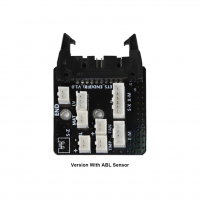3D printer hotend: What is it?
"No component on a 3D printer is as important as the hotend" - daring thesis, isn't it? We would agree with the core of the statement, because the most important process in additive printing takes place in a hotend: in a hotend, the filament is brought to the melting temperature and also kept at the same.
How does the hotend of a 3D printer work?
In order to answer this question, it is important to understand what components make up a hotend. The technology behind it is as simple as it is ingenious. The hotend can be roughly divided into two functional blocks. The upper part of a hotend, namely the part where the filament enters, is surrounded by cooling fins and a fan. In this part, which is separated from the lower part of the hotend by a so-called "heat break", the filament is cooled so that it does not heat up and stick to the PTFE tube inside the hotend.
The lower part of the hotend is called the heating block. A heating cartridge is used to heat the entire element to the desired melting temperature, thereby causing the filament to melt. A thermistor (temperature sensor) continuously monitors the temperature and returns it to the 3D printer.







